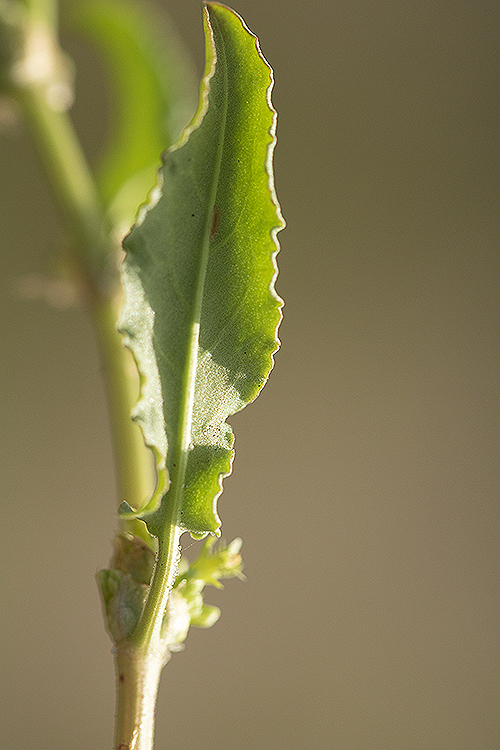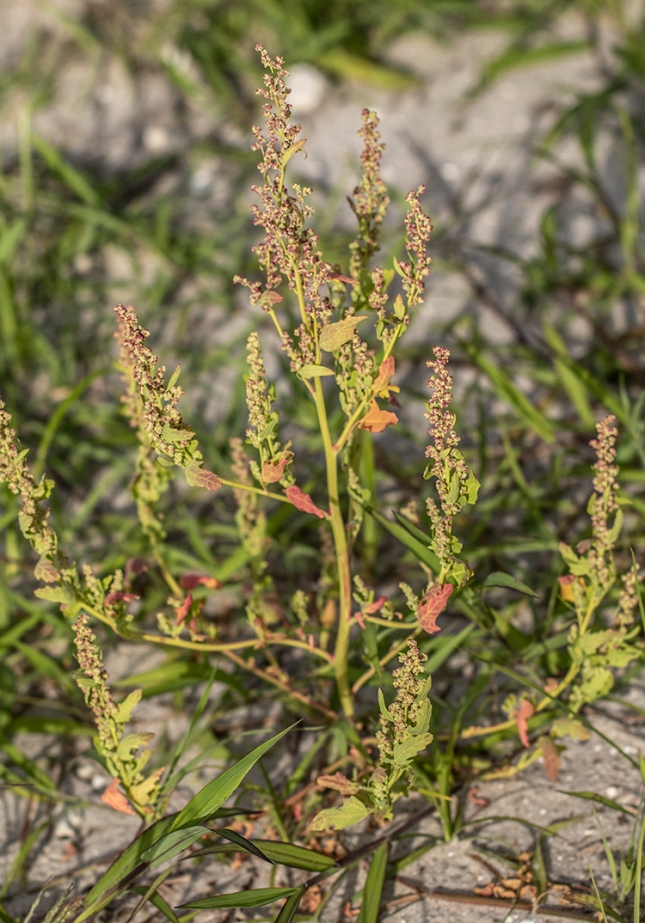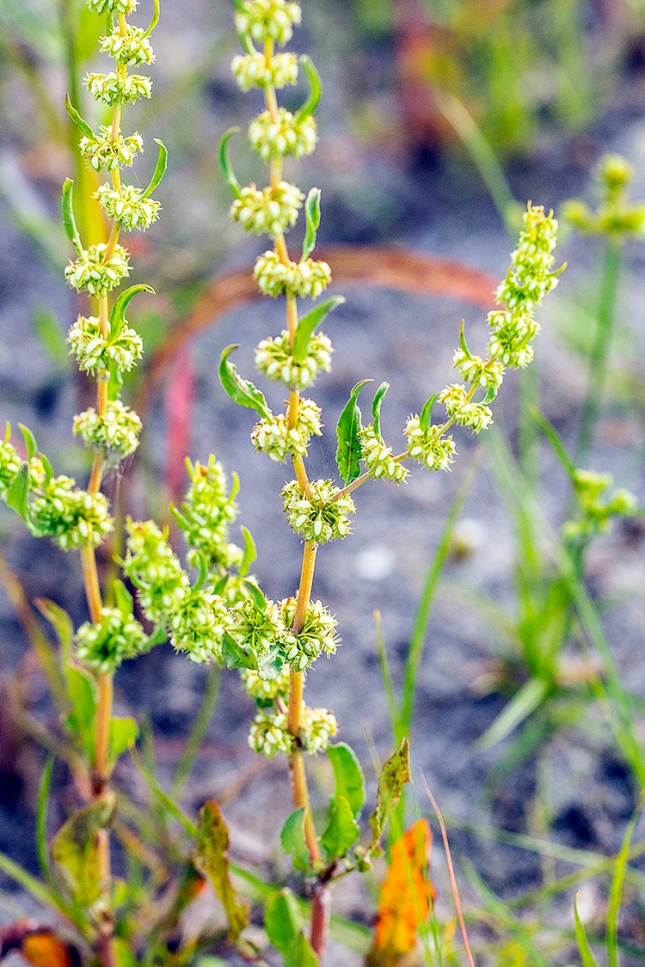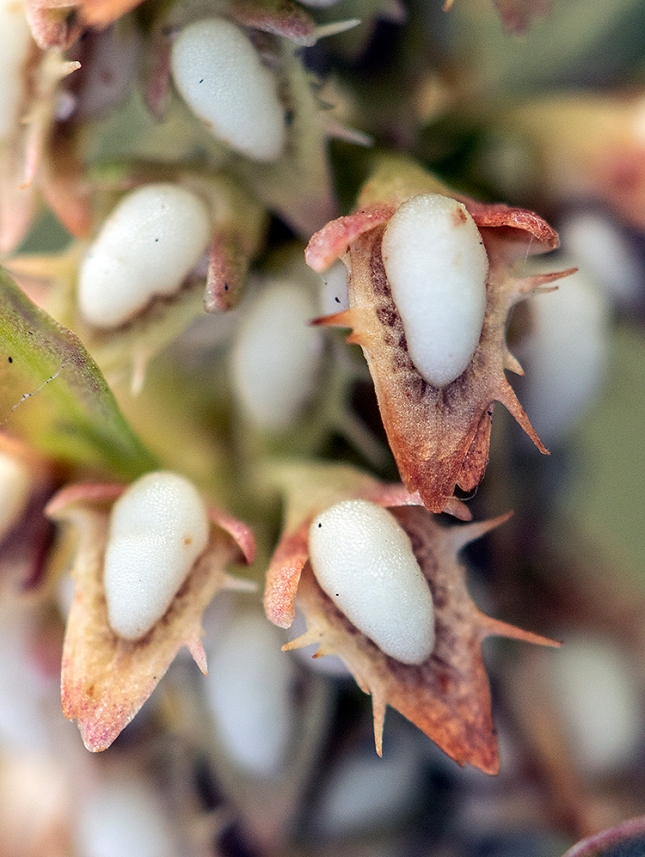Rumex pulcher
(Rumex comes from Latin rumo, to suck, because ancient peoples sucked the leaves to relieve thirst, see below. Pulcher means pretty.)
Polygonaceae
Today splendidly in flower in a weedy meadow…I love weedy meadows!…was a locally rare treat called Fiddle-Leaf Dock.

Leaf looks a liddle like a fiddle if you see the resemblance.
It is one of 200 species of Docks enhancing most of the temperate world. Like many Docks, today’s species is native to Europe and probably Asia, where plants of this genus are players in human affairs all the way back to that sucking mentioned above. Docks are often called Sorrels, which is a flavor designation, not a botanical classification. Sorrels tend to contain oxalic acid, giving them a “refreshing” acidy sour taste people still use for a quick pick-me-up. I used to enjoy red Sorrel beverage in Barbados sweetened with Barbados sugar, or with rum if you prefer. Various Sorrels fall into divergent botanical groups, including Hibiscus, Oxalis, and Rumex sharing possession of oxalic acid or similar flavoring. All this being so, Docks have long had a place in the kitchen and herb garden, where some cultivated species can be as pretty as they are tasty.

Taken today…pretty reddish tones.
Oxalic acid, even if refreshing in small doses, is bad for you in many ways, so please do not eat the weeds. Species of Rumex contain also sometimes ascorbic acid, Vitamin C, preventing knaves from becoming scurvy knaves.

Turning abruptly now to biology, species of Rumex have a particularly curious feature. The fruit is a small seedlike unit called an achene (AY-keen). Upon ripening it remains embraced in three persistent flower petals (technically, tepals) serving as protective walls encasing the fruit. Now for the weird part, either one or all three of these petals experience massive thickening of their mid vein into a thick glossy green, bright white, or red balloon called the tubercle. “Miss Kent” in The Magazine of Natural History described it well back in 1830:
The whole genus Rumex may appear strange at first sight on account of a tubercle (in some species very large) which destroys the outline of the flower. Some of these tubercles appear like little rubies, and add much to the beauty of the flowers.
Remember, the fancy tubercle is on the “petals” surrounding a tiny fruit, but why? No single answer, but first of all, the tubercle like a ruby is eye catching. In Fiddle-Leaf Dock it is showy too, bright white rather than ruby.

Wacky fruiting units with the big white tubercles destroying the outline of the flower. The fruit is hidden behind the tubercle-bearing petal.
It probably attracts birds, which for sure eat red or white berries and seeds. “Grain-eating” birds are reported dispersal agents for Rumex. Isn’t it convenient that the unit the birds sees and perhaps crunches is not the fruit itself, but rather a false grain on the protective cover? The actual tiny non-showy fruit presumably sneaks along for the ride achieving avian dispersal in one piece. And there’s more:
Multiple botanists have documented an odd correlation between Rumex tubercle size and proximity to the sea. Noticed too many times in too many places by too many observers to ignore. Large-tubercle species tend to be coastal, and far more interestingly, within single species bigger tubercles near the sandy shores and lesser ones inland. That leads to the obvious suspicion of tubercles aiding sea dispersal as floats and as bumpers on abrasive sands.
If the oceanic adaptations are “the” function, why do inland species have tubercles at all? And why gorgeous little rubies and shiny white gems? I’ll guess the tubercles probably started out serving variably as bird-bait as well as floats and bumpers, with those latter two functions gaining prominence in maritime habitats. You know, sort of pre-disposed.